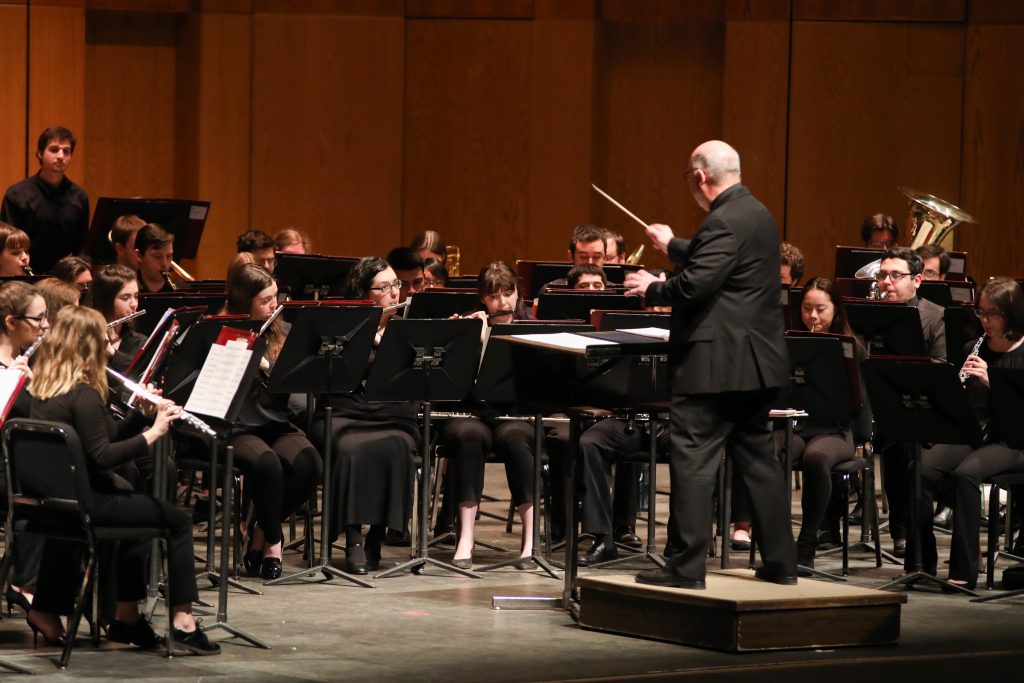
Fans of classical music weren’t late to the Osterhout Concert Theater on Sunday when the Binghamton University Wind Symphony performed its spring concert, “It’s About Time.” The conductors of the concert were Daniel Fabricius, former percussion instructor at BU, and Nathaniel Sodeur, a first-year graduate student studying music.
The symphony had more than 40 musicians and about 15 different instruments that fit into instrumental categories including wind, percussion, brass and string. In the concert, there were three songs played at the beginning followed by an intermission, a performance solely by the University Saxophone Ensemble and concluding with three more melodies. The concert kicked off with “Overture in Five Flat” by Julie Giroux and transitioned to “Firefly” by Ryan George.
In the performance, each song had its own unique style, where some started out with peaceful notes reminiscent of a spring morning and then transitioned into moments of clamorous volume. In other songs, it was vice versa. This juxtaposition blended well with the symphony’s theme of immediacy and alertness, and kept the audience observant and in a joyful mood.
During the introduction, Fabricius explained to the audience the reasoning behind wanting abrupt transitions between songs. Fabricius said that these transitions were to fit with the titular theme of the performance. During the opening, he said “it’s about time” at the end of every couple sentences leading up to the subsequent act, including that “it’s about time” the department performed music of a female composer, Giroux.
Aside from transitions between songs, “It’s About Time,” was primarily intended to kick off the concert in a way that caught the audience’s attention.
“The theme for ‘It’s About Time’ started with wanting to program two pieces – ‘Overture in Five Flat’ by Julie Giroux and ‘Give Us This Day’ by David Maslanka,” Fabricius wrote in an email. “I was drawn to these two pieces and realized they would serve as the opening piece and the final piece. Now I just needed to fill in the “time” between. The theme quickly emerged as I reviewed other possible pieces as I discovered choices that all touch on the element of time.”
According to Fabricius, he knew he wanted “Firefly,” “From a Dark Millennium” by Joseph Schwantner, “Aubade” by William S. Hartley and “Windsprints” by Richard Saucedo to be included because they all touch on the element of time.
When planning a future performance, Fabricius said he tries to see how different compositions might fit together in a program.
“I always have pieces in mind to program for future performances,” Fabricius said. “As I’m approaching becoming committed to several of the pieces I look for a ‘clever’ way to tie the pieces together into a unifying theme.”
The wind symphony orchestra’s next concert, “Gems Rediscovered,” will premiere on Saturday, March 2 at 3 p.m., and will highlight songs that have been lost or were long-forgotten.


